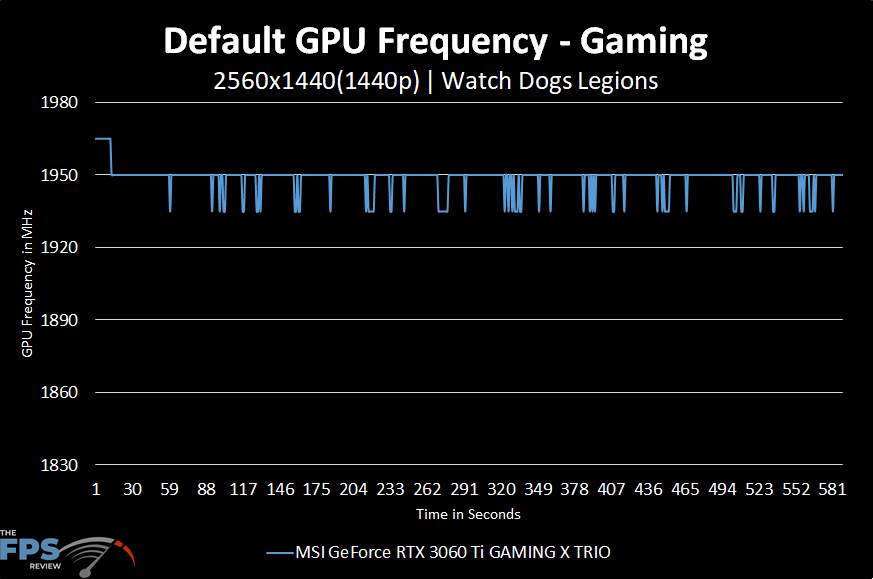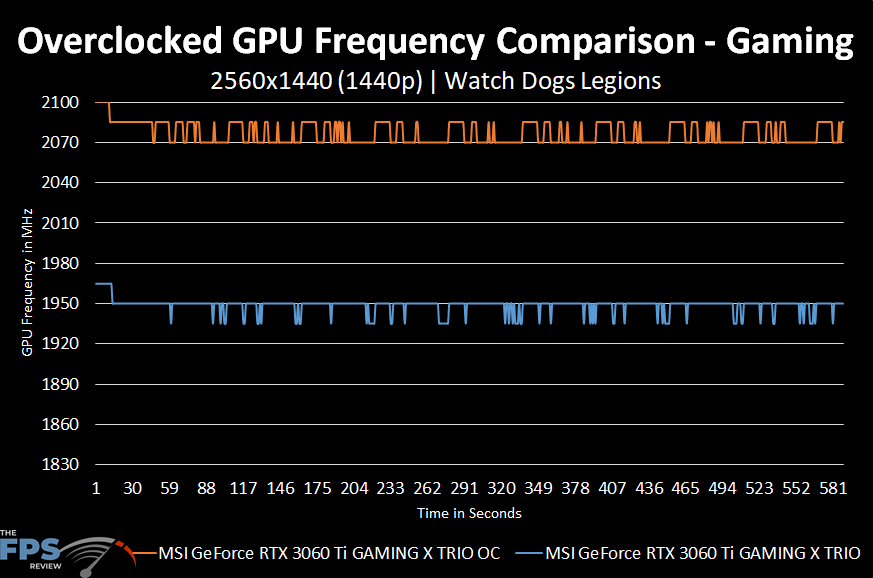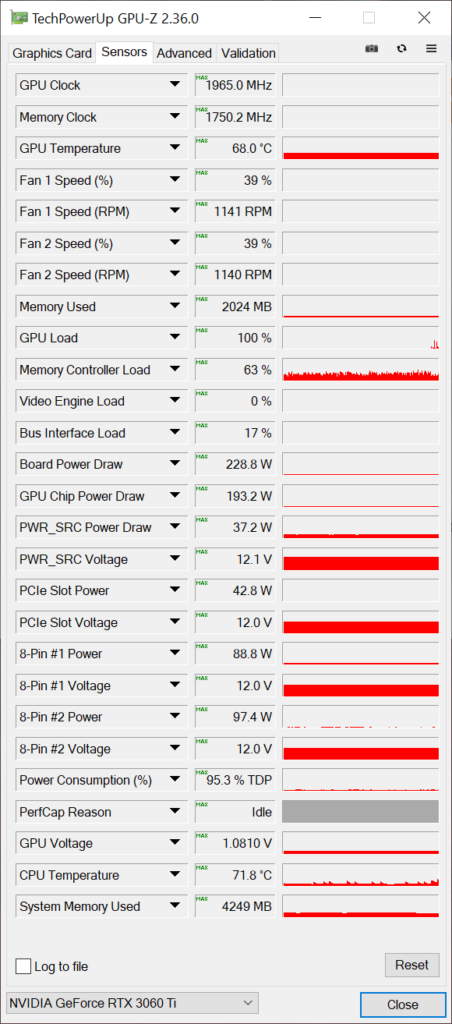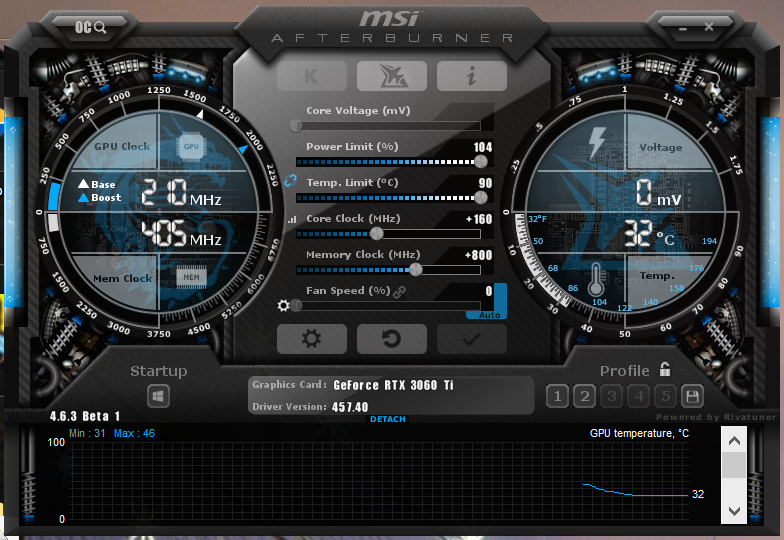Overclocking MSI RTX 3060 Ti GAMING X TRIO
Default GPU Frequency
How do you overclock the MSI GeForce RTX 3060 Ti GAMING X TRIO? Before we go adjusting core and memory sliders, it’s important that we observe and record the baseline experience one can expect from this GPU. This information can be important to anyone buying new and with no intention of overclocking. My process for obtaining these clocks was simply to run through Watch Dogs Legions at 1440p with the highest settings and recording core clocks with GPU-z.
During all testing, the ambient room temperature was 72F/22.2C. We want to see that the specified boost clocks are realistic and in no way being constrained by the thermal solution on the card. MSI specifies a 1830MHz boost clock, let’s see how much headroom this cooler can give us in testing.

In the above chart, we can see that at all times we are operating higher than the MSI specified boost clock of 1830MHz. In fact, our lowest observed clock speed was 1935MHz, or 105MHz/5.11% above the advertised clock speed. We saw a peak clock of 1965MHz while also managing an average clock speed of 1948.37MHz. This translates into a 6.26% clock increase over MSI’s overclock. Again we see the NVIDIA boost algorithm trying to obtain as much performance as allowed. Our Peak performance at 1965MHz gave us a 7.11% increase over that 1830MHz boost clock specification. All of this is without touching a single GPU based setting on the system, this is stock performance. I certainly cannot wait to see what the competition can do given how well MSI is doing out the gate. Build quality must be fantastic for this cooler and so begins our tear down in order to find out.
Highest Stable Overclock
For overclocking in this review we will be using MSI’s own Afterburner Software. I had expected that perhaps MSI Afterburner would allow me to adjust all options but due to the pre-release nature of the video card and its drivers, I was unable to move the voltage slider in any direction. This was, of course, after unlocking voltage control with the options in Afterburner. Regardless of that setback, I was still able to adjust the power limit, temp limit, and clock speeds.
In the photo above you can see how far we managed to take this video card. Firstly, the Power Limit allowed only a small 4% increase. However, keep in mind that because this is a custom video card the TDP is already different than a Founders Edition. These numbers were settled upon after countless hours in both real-world games as well as synthetic benchmark loops. We were able to push the memory up by about 800MHz taking us up from 1750MHz/14Gbps to 1902MHz/15.2GHz. This was an impressive result.
With our core adjustments, we had to be more conservative at a mere 160MHz boost to our clocks. When utilizing these settings in gaming we saw average clock speeds at 2076MHz with boosts around 2100MHz and a minimum of 2055MHz. With these results, we are now seeing clock speed averages that are 6.34% higher than the default on this video card. Our minimums are now 6% higher than our previous minimums and our peak clock speeds are reaching 6.64% higher than our out of the box performance.

These results are very good. It is hitting a minimum of 2070MHz and stays pretty much at 2080MHz while gaming. This overclock is higher than that what we experienced on the Founders Edition video card, it averaged 2052MHz on its overclock. Therefore, the MSI RTX 3060 Ti GAMING X TRIO is overclocking much higher.
The real impressive feature here was that we managed to obtain these results with zero significant impact to the acoustic performance of the video card and without tweaking Voltage. I am talking about dead silent operation throughout both the gaming session and synthetic benchmark loops. MSI also manages to keep our max temperature at 69 Celsius during both our real-world and synthetic benches. As most of our readers will know this is well within spec for a modern-day GPU.


